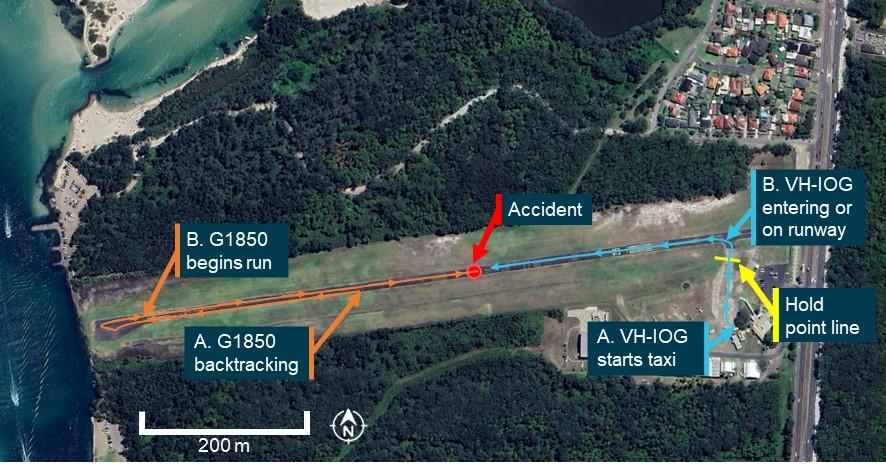
The pilots of two aircraft involved in a runway accident at Lake Macquarie did not hear each other on the radio, nor see one another, before a near collision occurred and one aircraft struck the ground while taking avoiding action, an ATSB investigation report details.
On 12 May 2023, an instructor and student pilot were conducting wheel balance exercises in a gyroplane on runway 07 at Lake Macquarie Airport.
Following one of these exercises, the student made a radio broadcast while the instructor turned the gyroplane around, about halfway down the runway, and taxied back toward the western threshold, to repeat the exercise.
“Meanwhile, an Extra EA 300L aerobatic aircraft with a pilot and passenger on board had taxied from the apron toward the eastern end of the runway to conduct a commercial joy flight,” ATSB Director Transport Safety Stuart Macleod said.
“The Extra pilot made two radio broadcasts before entering the runway, and beginning to taxi down the runway toward the western end, for a planned take-off from runway 07.”
At about this time, the gyroplane commenced another exercise, and accelerated down runway 07, toward the taxiing Extra.
“Neither aircraft’s pilots heard the radio broadcasts of, or saw the other, until the pilots in the gyroplane observed the Extra about 20 m in front of them on the runway,” Mr Macleod said.
In reaction, the gyroplane’s instructor pilot took control and banked right to avoid collision.
The aircraft’s rotor blades impacted the runway surface before the gyroplane veered off the runway and struck the ground, coming to rest on its side. The gyroplane was substantially damaged, the instructor was seriously injured, and the student pilot sustained minor injuries.
“When none of the pilots heard radio calls from the other aircraft, aircraft separation became reliant solely upon visual acquisition,” Mr Macleod explained.
“As such, several factors likely reduced the ability of the pilots to then visually identify each other, including the small angular size of each aircraft, the complex background features with low relative contrast, and minimal relative movement between the aircraft.”
In addition, the Extra’s tailwheel configuration limited the pilot’s forward visibility while taxiing, while sun glare likely also affected the Extra pilot’s ability to detect the gyroplane.
“This accident highlights the limitations of unalerted see-and-avoid around non-towered aerodromes,” Mr Macleod said.
“Reducing the collision risk around non-towered airports is one of the ATSB’s key SafetyWatch concerns, and this accident serves to remind pilots of the importance of effective radio communications to increase traffic awareness, and to ensure an effective visual scan to identify conflicting traffic.”
The ATSB’s publication A pilot’s guide to staying safe in the vicinity of non-controlled aerodromes outlines many of the common problems that occur at non-controlled aerodromes, and offers useful strategies to keep yourself and other pilots safe.
Additionally, the Civil Aviation Safety Authority's Pilot Safety Hub also has extensive information on non-controlled operations.
Since the accident, Lake Macquarie Airport’s operator released a bulletin to all aircraft operators highlighting the importance of visual lookout in addition to radio discipline. The airport operator has also acquired radio recording equipment to allow communications to be periodically reviewed.
The operator of the Extra updated operational procedures, and the representative body for gyroplanes, the Australian Sport and Rotorcraft Association, has advised ATSB of its intent to replace the one-off human factors exam with a recurrent exam.


